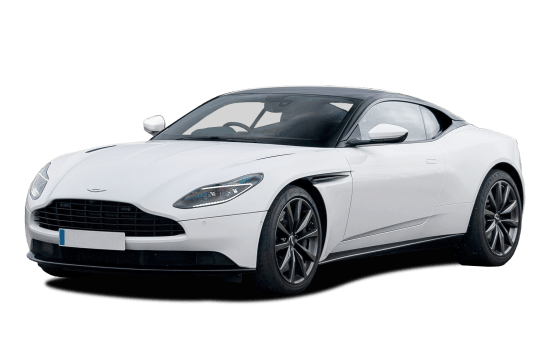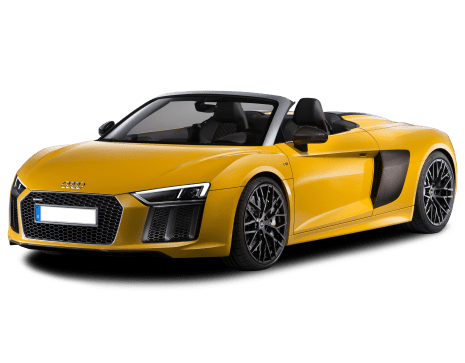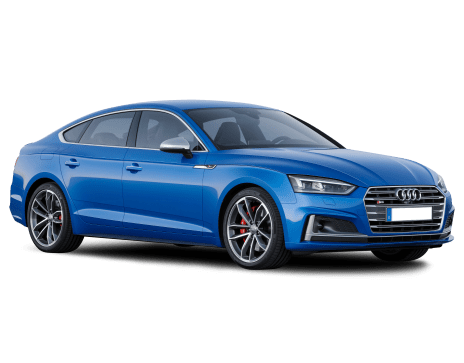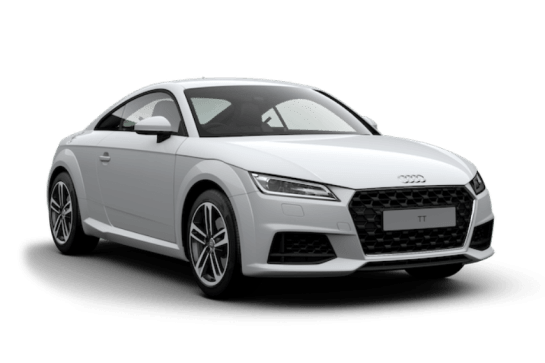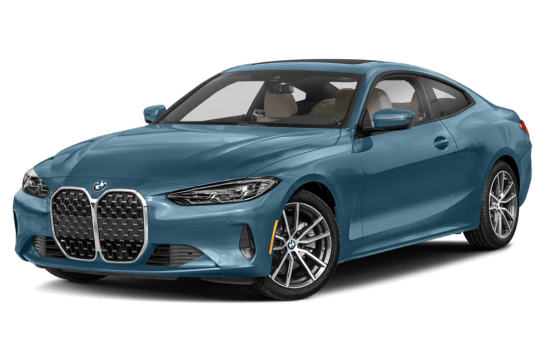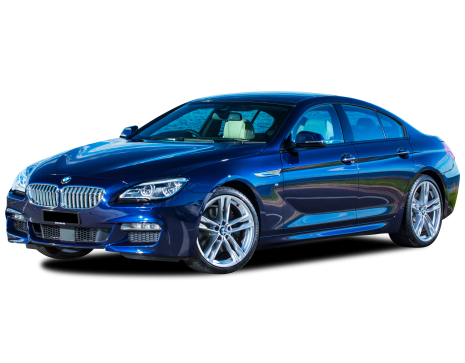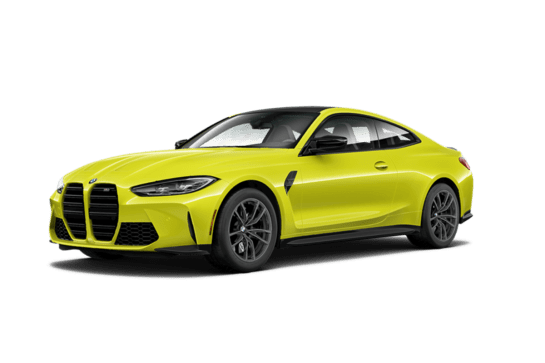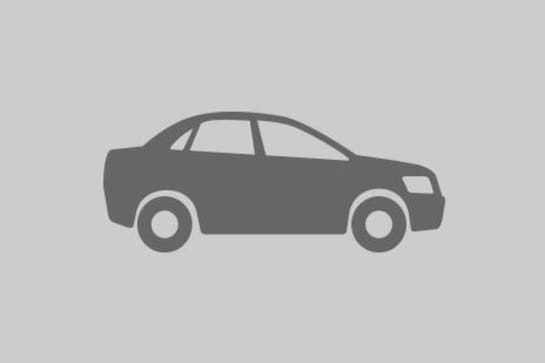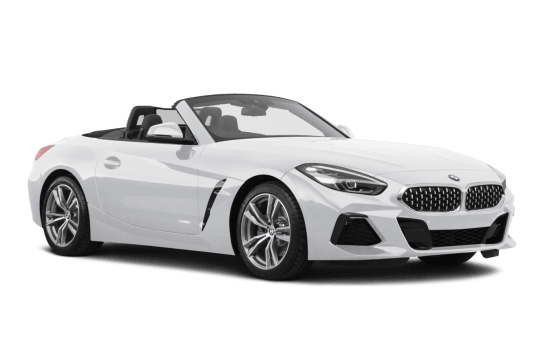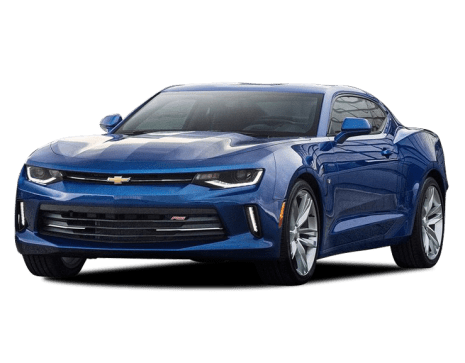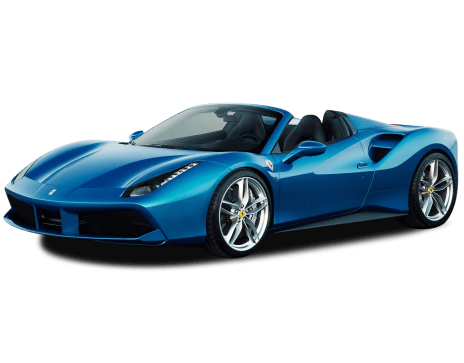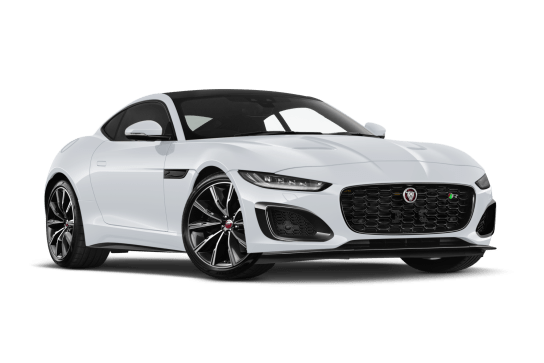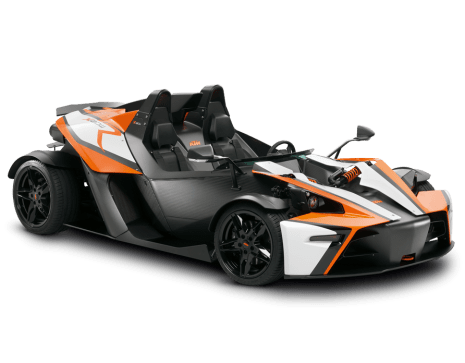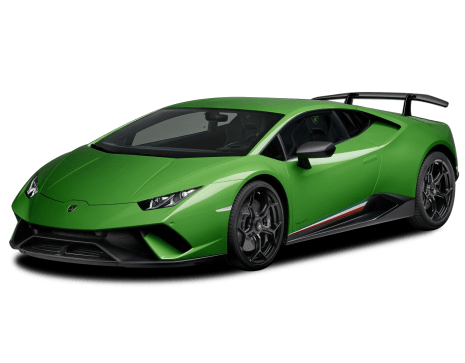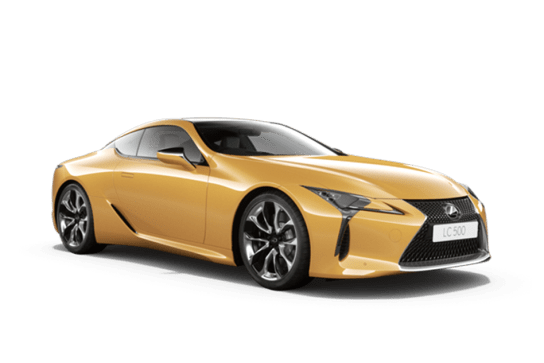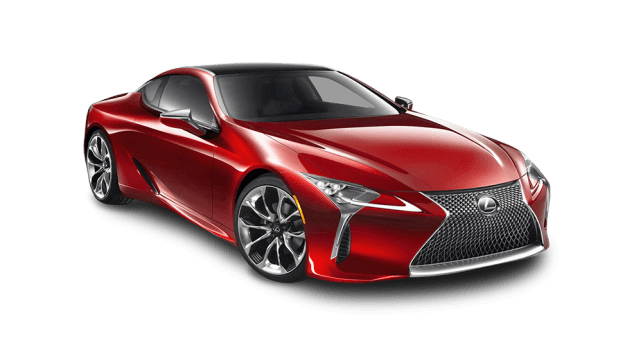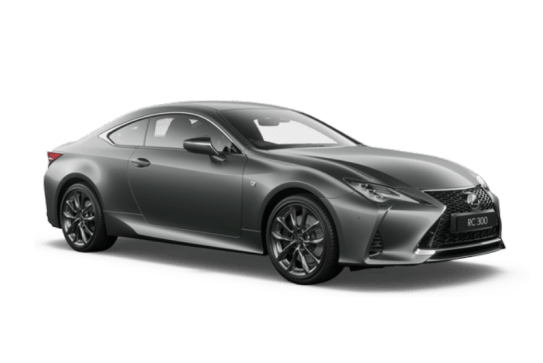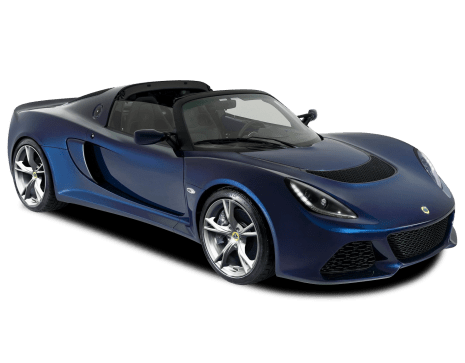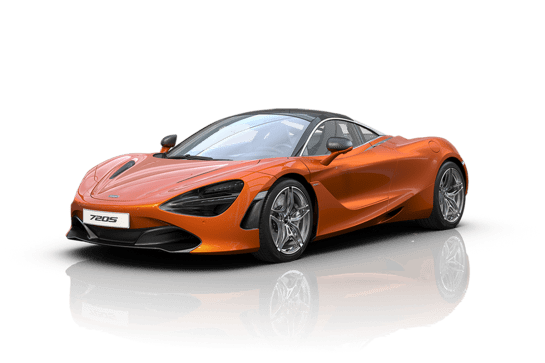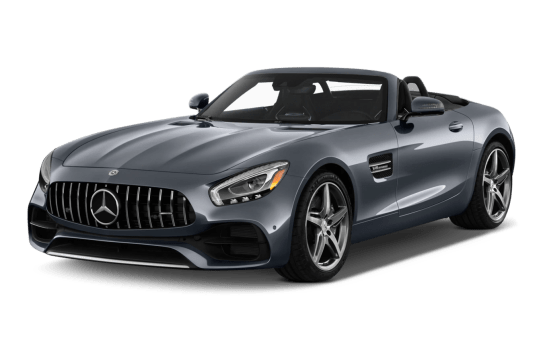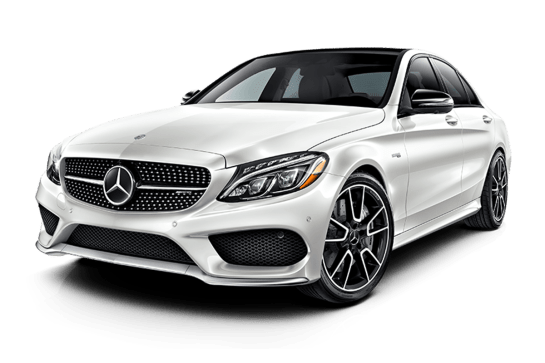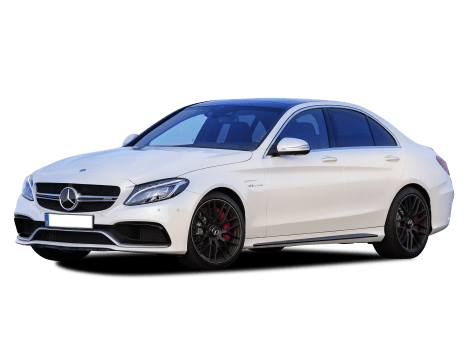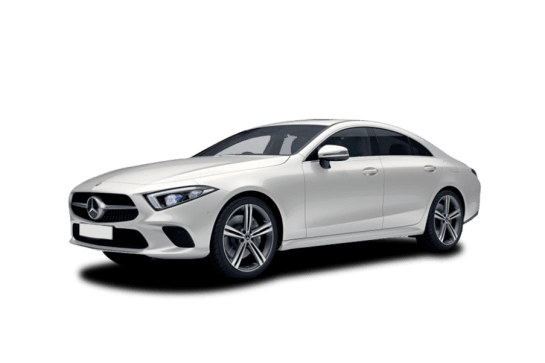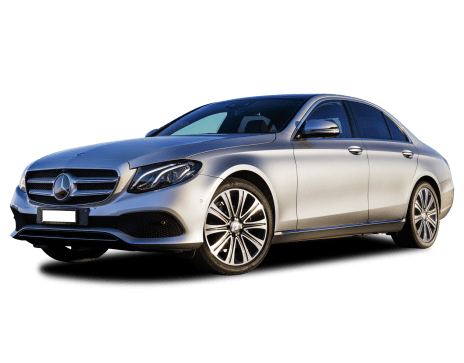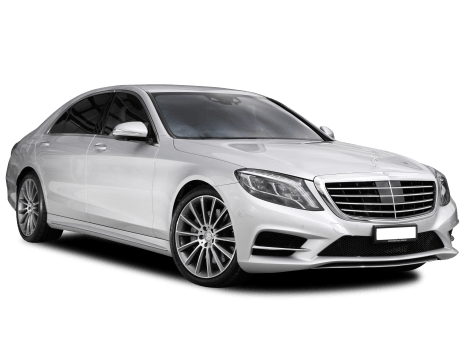
Porsche 911 VS Mercedes-Benz C63
Porsche 911
Likes
- It can really go off-road
- Still handles brilliantly on sealed roads
- Has everyday usability
Dislikes
- Mid-range 911 powertrain
- High asking price, even for a 911
- Built in strictly limited numbers
Mercedes-Benz C63
Likes
- Amazing power
- Addictive sound
- Impressive to drive in most situations
Dislikes
- Price is high
- Still not 100 per cent on the Coupe’s looks
- No applicable ANCAP score
Summary
Porsche 911
Marvel Studios has become the master of extracting as much value from a concept as any corporation in the world - except one.
Each year we’re bombarded with at least a couple of superhero movies and even more television shows, so much so now that the term ‘superhero fatigue’ has entered our social consciousness. We no longer care if Thor or Spider-Man save the day because we’ve seen so many world-ending disasters being stopped at the last minute we can no longer feel excited.
Porsche, though, is able to create one spin-off after the other and still have true motoring enthusiasts getting sweaty palms and elevated heart rates. The current 992-generation 911 range included a frankly mind-boggling 23 variants, from standard Carrera all the way up to the race-car-in-disguise GT3 RS and the full-speed, full-lux Turbo S.
Read more about
- Porsche's Mission X will be the brand's fastest and most expensive road car yet - but will the Lotus Evija, Aston Martin Valkyrie rival come to Australia?
- The end is nigh for petrol-powered 2024 Porsche Macan, Cayman and Boxster: Porsche Australia sets date to close order books for three models
- 2025 Porsche Taycan Turbo GT revealed: Most powerful series-production Porsche yet conquers Laguna Seca and the Nurburgring before coming to Australia mid-year as new electric car flagship
And yet, somehow the German maker found room for a 24th variant. How? By going off the beaten track. Literally.
The Porsche 911 Dakar is unlike anything the brand has done before, taking the iconic sports car and giving it an off-road twist.
So, what is it exactly? Well, for those unfamiliar, the Dakar Rally is an off-road race that typically lasts two weeks and sees competitors take on the roughest and toughest conditions the desert can throw at them. It’s a gruelling and sometimes fatal challenge, but it’s the toughest test of human and machine.
It’s also typically contested by large, SUV-based vehicles. In recent years it was Toyota HiLuxes and Volkswagen Touaregs doing the winning, while in the early days it was Range Rover.
Porsche won the Dakar Rally in 1984, using a specially modified version of its 911 to beat its conventional off-roader competition.
To celebrate that victory, and add one more variant to the 911 range, Porsche created this jacked-up, beefed-up version of its sports car.
But is it all looks and no substance? We went bush to find out…
| Safety rating | — |
|---|---|
| Engine Type | 3.0L |
| Fuel Type | — |
| Fuel Efficiency | 10.5L/100km |
| Seating | 2 seats |
Mercedes-Benz C63
If you know the Mercedes-AMG C 63 S, you know it’s a hardcore V8 thumper with little in the way of bashfulness. It’s a brawler. A beast.
Now there’s an even more eye-catching AMG C 63 S Coupe, which we’re testing here. It’s the Aero Edition - a collector’s version of the current-generation C 63 S Coupe with a bit more visual bling that also helps it stick to the road better.
It is a local area special edition, with only 63 examples to be sold across Australia and New Zealand. And if the rumours are true, the next-generation will see the V8 engine in danger of being axed in favour of a hybrid, high-performance four-cylinder version. Say it ain’t so!
Well, if the CarsGuide crystal ball turns out to be right, maybe one of these C 63 S Aero Editions is worth getting in your garage quick-smart. Or is it? Let’s go through the criteria and see how it stacks up.
| Safety rating | |
|---|---|
| Engine Type | 4.0L turbo |
| Fuel Type | Premium Unleaded Petrol |
| Fuel Efficiency | 10.3L/100km |
| Seating | 4 seats |
Verdict
Porsche 9118.1/10
Personally (and I’m expecting some hate from the fans in the comments), I hope Marvel slows down on the superhero movies and shows, but Porsche can keep doing its thing if cars like the 911 Dakar are the result.
It’s certainly a very niche offering, and one that will almost certainly go to collectors in this instance. But even that didn’t stop Porsche from investing in proper off-road upgrades to ensure the 911 Dakar is just as capable in its element as the 911 GT3 is in its and every other member of the range.
There’s been no official word from Porsche, but my hope is the 911 Dakar follows the same scenario we saw the the previous-generation 911 R. That was another strictly limited special edition, basically a GT3 without the big wing, and it was so popular it spawned the 911 GT3 with Touring Package for this latest generation.
It may be unusual and unlikely, but the 911 Dakar is also unquestionably a great addition to the already extensive 911 range.
Mercedes-Benz C637.8/10
The Mercedes-AMG C 63 S Aero Edition is an absolute beast of a car, but it comes at a pretty hefty price. Yes you get a lot of performance, and the fact there are only 63 examples being made for Australia and New Zealand could be enough to get you to sign on the line. For me, though, if I was after a C 63, it’d have to be a wagon. It doesn’t need an Aero pack to look better.
Design
Porsche 911
As you can see in these images, our test car was fitted with the optional 'Rallye Design Package'. It adds another $54,730 to the cost but brings with it this head-turning paint scheme inspired by the racing livery from the 1984 winner. It’s actually a two-tone paint job with a wrap, the first time Porsche has produced such a finish on any of its production cars.
The ‘Roughroads’ is a substitute for the original cigarette brand that sponsored the car, while the white and blue scheme, with red and gold highlights is almost identical to the ‘84 car. Owners could pick any racing number between one and 999, our test car had #176 because that’s the number carried by the winning car.
The Rallye Design Package isn’t just a fresh look, too, it also adds the white wheels, a half roll cage, six-point racing-style harnesses and a fire extinguisher, so you can enter motorsport competitions and really push your Dakar to its limits.
Mercedes-Benz C638/10
I’ve never been the biggest fan of the current C-Class Coupe’s styling. To me, it has always looked a little droopy, a little melted at the back.
I have to say, the Aero Edition has changed my opinion somewhat, as the new graphic elements help lift it up a bit, visually raising its rear up like a stretching cat, tail in the air. I’m still not 100 per cent on it, but to my eye it’s better.
The carbon-fibre trim elements that have been added to the exterior certainly add some menace to the look, too, and I simply can’t help but constantly notice out of the corner of my eye the AMG pressing in the staggered, dished rims. At a glimpse, from a distance, it looks like rim damage, but thankfully it’s not!
The staggered set-up does really add some width and mongrel to the look, as if it needed more, with its open maw lower bumper air dam, and the signature 'Panamericana' grille treatment which looks like an evil character out of a movie. If you know the one I’m talking about, let me know in the comments.
As much as the look matters when it’s parked in your driveway, it’s the cabin that arguably matters more, right? That’s where you spend your time, after all. Check out the interior images to see if you think it lives up to the exterior look.
Practicality
Porsche 911
The interior is probably the most ‘normal’ 911 element of the Dakar. Yes, it’s strictly a two-seater (even without the optional roll cage), but it doesn’t feel much different to a GT3, especially as the brand’s 'Race-Tex' synthetic suede is the standard trim material. The only exception is the unique ‘911 Dakar’ badge on the passenger side of the dashboard, which tells you exactly which one of the 2500 examples yours is.
While Race-Tex is the primary trim, there’s plenty of leather elements and contrasting stitching to give a premium look and feel. The standard seats in the Dakar are the lightweight full bucket sports seats, made from carbon-fibre reinforced plastic and also trimmed in Race-Tex. This adds to that sporty, GT3-like feeling. They’re comfortable when you’re in them, but as they’re quite deep they make getting in and out a bit trickier than the standard Porsche chairs.
The rest of the technology is standard Porsche. The multimedia system is as simple and intuitive as ever, one of the better examples on the market today, which is something you typically think of with Porsche but it shows the company’s attention to all the details.
The Dakar comes equipped with a Bose surround sound system and full smartphone integration, with wireless Apple CarPlay and Android Auto.
However, it’s worth noting if you add the Rallye Design Package and get the roll cage it will cut down on the amount of usable storage space. Without it, you can use the now-carpeted space where the rear seats would go for extra storage, but with the cage you can only squeeze a few soft items in. The rest has to go under the bonnet in the relatively deep but narrow front storage space, which measures 132 litres.
So, if you do want to take an extended road trip in your 911 Dakar, springing for the roof storage system would be a helpful idea.
Mercedes-Benz C637/10
No two-door coupe is going to offer you the space and comfort of a sedan or wagon, that’s just a fact. But that only matters if you plan to actually use the rear seats. If you don’t, then the Coupe version of the C 63 S might be perfect for you.
Even so, I managed to (only just) squeeze myself between the seat and the door opening to slide into the rear row. This won’t be easily achieved by all attempters, especially on the driver’s side.
Let’s just say I probably looked like I was doing something very weird to the driver’s seat as I spider-manned my way in.
The rear space is tight for someone my height (182cm/6’0”) behind their own driving position, with knees hard-up against the seat in front and not much headroom (my noggin’ was brushing the ceiling) or toe space (size 12s don’t fit so well) to speak of.
It’s certainly a selfish car. Or maybe it’d be fine for smaller kids. There are two spaces in the back, both with ISOFIX child seat anchors and top-tether points.
But there is storage in the back - cupholders and storage caddies either side of the seats, though the storage situation improves in the front zone, with bottle holders in the doors, cupholders between the seats, loose item storage under the media screen and a covered centre armrest bin, too.
The front cabin is a special looking place, with carbon-fibre abounding across the dash and nice trim on the doors. The AMG steering wheel is a sight to behold - it’s a flat-bottomed unit with carbon-fibre and Dinamica (that’s Benz talk for microsuede) trim: perfect for sapping sweat as you manhandle the C63 through the bends.
The seats are AMG Performance sports units up front, and the trim used is reserved for this model specifically: Nappa leather with yellow stripes. There are yellow details elsewhere, including on the rear seats, centre console and dash, and it certainly adds some visual excitement.
Media is controlled by a 10.25-inch display and Mercedes-Benz’s touchpad control system, but there is no touchscreen - rendering the Apple CarPlay and Android Auto smartphone mirroring technology somewhat tedious.
I’ve always had a gripe with screens that don’t allow touch but feature the tech that’s designed to transfer your phone’s screen to the media unit, and I can tell you the longer you spend twiddling the dial to get where you want to go, the more annoying it becomes.
The Burmester sound system has 13 speakers and is rather good, but I prefer the sound from the standard fit variable sports exhaust. So maybe that quibble with CarPlay isn’t that big a deal.
And if you just want to charge your phone, and there’s a second USB port up front, as well. Note: in non-Aero Edition C 63 models without the carbon-fibre interior pack, you also get Qi wireless phone charging, but it’s deleted from this variant and any model with the carbon pack.
The driver has a 12.3-inch digital info display to show where you are and what the car is up to, and there’s a head-up display as well. Yep, there’s standard sat nav with live traffic updates (and even live fuel price updates) - it’s just a shame the maps still look early 2000s-spec in 2D layout.
Cargo space is okay. The claimed cargo capacity or boot volume is 355 litres (VDA) with the rear seats in place. That’s small for a coupe of this size, and the shape of the boot (with a hump behind the rear seat) isn’t great as things do move around quite a bit.
But, thankfully, Mercedes has included its clever foldable storage box system under the boot floor - it goes where you might usually expect a spare wheel, but there isn’t one in this car. Instead you get Mercedes’ 'Tirefit' repair kit with an electric pump.
Price and features
Porsche 911
At first glance you might just think the 911 Dakar is just a sticker pack and a new set of wheels and tyres, but you’d be very wrong.
Yes, there is a sticker pack (more on that later) but Porsche has made some pretty significant engineering changes for the Dakar. Enough that the company claims it now has similar ground clearance and approach angles of a “conventional SUV.”
These changes include up to 50mm more ground clearance than a standard 911 Carrera, plus an extra 30mm of lift when needed from the hydraulic suspension. This higher height isn’t speed restricted, so you can stay lifted and put your foot down, which is perfect for high-speed off-road driving.
There are unique five spoke, forged alloy wheels (19-inch front, 20-inch rear) fitted with specifically designed Pirelli Scorpion All Terrain Plus tyres. To fit this new package there are wider wheel arches with stainless steel for extra protection.
Other unique additions include red aluminium towing points front and rear, a new front bumper with underbody protection and a new, fixed rear spoiler. The bonnet is also very similar to the one found on the 911 GT3, made from carbon-fibre reinforced plastic to save weight.
Porsche has added rear-wheel steering as standard on the Dakar, as is its 'Dynamic Chassis Control' anti-roll stabilisation system, with both intended to help its off-road prowess.
There are some notable - and unusual - optional extras for this version of the 911. These include roof racks able to incorporate a lightbar and/or an extra storage rack that can take on an additional 42kg of luggage. Shovels, traction boards, spare tyres and fuel or whatever else you need for an outback adventure. You can even add an optional tent if you want to go camping in your Porsche 911.
Despite an official asking price of $491,400 (plus on-road costs) it’s hard not to give this 911 a perfect score for price because this is one of the very few cars that will almost certainly appreciate in value, rather than shed it. Porsche is building just 2500 examples of the 911 Dakar globally, so these will become a collector’s item and should be priced accordingly.
Mercedes-Benz C637/10
Look, I’m not likely to ever be in the position to say that a car that costs $188,600 plus on-road costs is “good value”, but to be honest, if you’re in that position, you’ll be getting plenty of car for your cash.
The Carbon Edition of the C 63 S Coupe adds $17,200 over the standard version of the high-performance two-door, but it adds a bunch of extras to help justify its price. A car like this is always going to be seen by some as a profligate purchase, right? You need to be able to justify spending an extra MG3’s worth of cash on this Edition.
The noticeable exterior bits include an AMG Performance rear spoiler, a model specific front lip, rear diffuser, and side facings for the rear apron air vents. Carbon-fibre is used in the front apron A-wing, the side sill inserts, rear diffuser insert, rear spoiler and the side mirror casings.
There’s more carbon-fibre inside the cabin, which we’ll cover off in the interior section. Other additions over the standard C 63 S Coupe include ceramic composite front brakes (402mm six-piston) and 360mm single-piston rear brakes, and there are “ultra-lightweight” AMG forged 'Matt Black' alloy wheels with 19-inch rims at the front and 20s at the rear.
And in nice news, the car you see here has no optional extras fitted at all. The colour is 'Iridium Silver', one of only two options for this limited run model (the other available hue is Polar White, and both come at no extra cost).
Standard inclusions comprise leather interior trim, heated and electric adjustable front seats, dual-zone climate control, a 10.25-inch media screen with sat nav and smartphone mirroring, DAB radio, 13-speaker Burmester sound system, 12.3-inch digital driver info display, head-up display (HUD), ambient lighting, and performance items like active dynamic engine mounts, an adaptive AMG performance exhaust, a rear differential lock, and adaptive sports suspension.
Plus there’s a full-spec safety offering which we’ll cover in the section below.
Thinking about what cars compete with this one? There’s the Audi RS 5 Coupe (from $150,900), the Lexus RC F (from $136,636), and the BMW M4 Competition (from $167,829). So the C 63 S - which is already expensive comparatively - looks positively pricey in Aero Edition spec.
Under the bonnet
Porsche 911
While it has elements of the 911 GT3, the 911 Dakar is based on the Carrera 4 GTS Coupe, at least from a powertrain point of view. Both models share the same 3.0-litre twin-turbo flat-six engine tuned to make 353kW/570Nm, paired with Porsche’s eight-speed dual-clutch transmission as standard. Naturally, it’s also fitted with Porsche’s all-wheel drive system, but the Dakar gets some unique features.
For starters, it’s equipped with the same trick engine mounts as the 911 GT3, which are stiffer to cope with extra off-road driving.
The all-wheel drive system features two unique modes - 'Rallye' and 'Off-Road', designed for improved loose surface performance. The former sets the all-wheel drive with a rear-bias and primes the powertrain for sporty driving, while the latter actives the differential lock for better slippery surface traction, also setting the engine and transmission for maximum low-speed response.
One major difference between the Dakar and the Carrera 4 GTS (owing to the former's off-road changes) is a much lower top speed; 240km/h compared to 309km/h for the GTS. The 0-100km/h times are almost identical, though, with the Dakar taking just 3.4 seconds and the GTS 3.3 seconds.
Mercedes-Benz C639/10
Open the shapely bonnet of the C 63 S and you’ll find a hand-assembled horsepower-monster engine with a printed name plaque to prove it.
The 4.0-litre twin-turbo V8 produces 375kW of power at 6250rpm, and 700Nm of torque from 2000-4500rpm. It runs a standard-fit nine-speed 'Speedshift MCT' (multi-clutch transmission) automatic, and it’s rear-wheel drive. And yes, that means it likes to boogie.
The claimed 0-100km/h time is just 3.9 seconds, and top speed is apparently pegged at 250km/h. Yeesh.
The name on the “Handcrafted by” plaque on this particular engine? Hat tip to you, Julian Rembold. This is quite a piece of work.
Efficiency
Porsche 911
Despite the knobby tyres and extra weight (which is only 10kg in standard form, but will obviously blow out if you get the roof basket and load it up) fuel economy for the 911 Dakar is only fractionally heavier than the GTS. Its official rating is 10.5L/100km and on test, which included spirited driving on- and off-road, plus a mixture of motorway and urban running, we returned 12.6L/100km, which is solid for a sports car.
Coupled with the 67-litre tank, you’ll have a theoretical range of 638km on a full tank, which won’t get you across the outback but is respectable for this type of car. It isn’t a Toyota LandCruiser so obviously it won’t get you quite as far on a single fill.
Mercedes-Benz C636/10
High numbers are what AMGs are about. Sadly that’s the case not only for performance outputs but also fuel consumption.
The official combined cycle fuel use claim for the C 63 S Coupe is 10.3 litres per 100 kilometres, and you need to fill it with 98RON premium unleaded fuel, too.
On test? Well, across a mix of different driving - urban, highway, back road and spirited stints - I saw an 'at the pump' return of 12.2L/100km, while the digital readout stated 12.0L/100km.
Given the performance on offer, and how much I took advantage of it during my week with the car, that’s not bad…
Fuel tank capacity is 66 litres. So go easy if you know there won’t be a fuel stop for a while.
Driving
Porsche 911
Porsche isn’t known for doing things in half-measures, so it should come as no surprise that the 911 Dakar has some serious off-road potential. Thanks to the extra ride height, underbody protection and the new tyres the Dakar has some strong off-road credentials.
It has 161mm of ground clearance, which is only 26mm less than a Macan. Porsche also claims an approach angle of 14.2 degrees, a breakover angle of 16.2 degrees and a departure angle of 16.4 degrees.
Even so, the idea of taking a Porsche 911 off-roading still feels unusual, especially when you get gravel under the tyres… and yet, the Dakar feels at home. With the drive mode set to Off-Road and maximum ride height engaged, the Dakar is more than capable of navigating some very rough terrain.
We headed down some rugged trails in the Blue Mountains, west of Sydney, and after some heavy rain the previous weeks, the surface was extremely rutted, chopped up and littered with large gravel. While you wouldn’t put it in the same off-road capability class as a 70 Series LandCruiser, the Dakar had no trouble navigating roads that would normally break a sports car. Even when we came across a water crossing the Porsche just powered through it without any issue.
Back on sealed roads, and despite the knobby Pirellis, the 911 Dakar handles just as well as you’d expect a Porsche sports car to. It doesn’t feel significantly slower or dulled by its off-road elements and instead has the same smooth, effortless performance that has made this model a sports car icon. It's obviously not quite as precise and poised as a 911 GTS on road tyres would be, but it's not far off.
The everyday added bonus of the Dakar’s off-road upgrades is, unlike any other sports car (except maybe Lamborghini's Huracan Sterrato), you never need to worry about speed bumps or potholes, so it would actually make for a surprisingly liveable daily driver.
Mercedes-Benz C639/10
Just one word sprang to my mind when it comes to accurately describing the performance on offer from this car. The word is ‘brutal’.
Smash the accelerator and the power and torque on offer is enough to make your eyes feel like they’re not doing the right thing anymore. You get pushed back in your seat with a surge, and your ears are also rewarded with one of the best soundtracks in the automotive world.
The engine builds pace with enormous intent, and the sound that comes from under the bonnet and out the back through the exhausts is addictive.
Yes, there is an active exhaust button which you have to press to make sure that you hear all that noise if you’re running around in 'Comfort' mode, and during my time with the car it was active the whole time.
I had some questions from neighbours over the week that I had this car about whether it was actually nice to live with on a day-to-day basis. And the answer is yes, if you put it in comfort mode it’s surprisingly amenable.
The ride is really well sorted at pace despite having a bit of that trademark low-speed wobble that seems to afflict Mercedes products from A-Class through to the GLE SUV. But it wasn’t bad enough to really bother me, as most of my time was on highways and backroads.
The steering is direct and accurate. The only thing you need to be aware of is that you will lose traction at the rear axle when you put your foot down hard. And for the enthusiast that’s exactly what you want.
I know I want to feel the thing squirm under throttle. It’s a rear-drive V8 coupe, after all. You want to feel like you’re a vein in its bicep muscle; you know, the one you see in a weightlifter’s arms – the one that wiggles around a lot. You want to have that. Right?
On the performance front it is exceptional. Twist the little dial on the wheel to 'Sport' or 'Sport+' (I didn’t sample 'Race' mode as I wasn’t at a racetrack), and everything feels like it’s had a protein shake.
Even so, in that mode it steers brilliantly, there's a nice feel through the wheel, and the ride, while stiff, controls the body brilliantly when you change directions.
The transmission is very good, too. In Comfort mode it can take just a second or two at first to become accustomed to the idea that you want to drive aggressively.
But in Sport mode, or when you select the manual transmission mode using the trigger button on the steering wheel, you will certainly get the most out of the engine. That’s what I did when I was driving it in a ‘spirited’ manner.
If you are just after that high-end Coupe cruiser experience, it’s a relatively quiet car (provided the surface below isn’t the coarsest of coarse-chip bitumen), with enough luxuriousness to make it feel premium as well as sporty. That’s an important thing to consider, especially at this price point.
Safety
Porsche 911
Porsche equips the 911 Dakar with airbags for both occupants, covering the front, thorax and sides plus cruise control is standard. However, there’s no suite of active safety features, with only ‘Warn and Brake Assist’ standard and the Dakar missing out on the 'Lane Change Assist' that’s fitted to the 911 GTS.
Given ANCAP requires seven cars for each crash test it’s unlikely the organisation will spend the $1.9 million it would need to get its hands on enough 911s; and certainly not the limited edition Dakar.
But that’s in no way meant to insinuate the 911 is an unsafe car. Far from it. It feels solid and secure, and its responsive and direct handling certainly impacts its active safety, while it has the key passive safety features, with full airbag coverage.
Mercedes-Benz C638/10
There is no applicable ANCAP crash test rating for the Mercedes C-Class Coupe, nor is there one for the C 63 specification. But when it was tested back 2014, the sedan scored five stars - as you’d expect.
It is comprehensively equipped in terms of safety technology, including auto emergency braking (AEB) with pedestrian and cyclist detection (from 7.0km/h to 70km/h) and it’s active for cars from 7.0km/h to 250km/h.
Plus there’s lane departure warning and active lane keeping assistance (from 60km/h to 200km/h), blind spot monitoring with 'Active Blind Spot Assist' that will stop you from veering into oncoming traffic, front and rear cross traffic alert, and adaptive cruise control (Distronic) with traffic jam assist.
The C 63 also features 'Route Based Speed Adaptation', which can adjust your speed based on where the car thinks you are on the map. Just note - if you’re driving through new tunnels that haven’t been flashed to your car’s nav (as happened to me in Sydney during my testing week) - then you could find the car dramatically braking for surface-level intersections. You can switch the system off, thankfully.
There are nine airbags fitted, and while you mightn’t use the rear seats much there are ISOFIX and top tether points for both positions (yes, only two).
Ownership
Porsche 911
While most car brands, even the premium ones, have moved to at least a five-year warranty, Porsche is sticking with three years (and unlimited kilometres). But you can extend the warranty, for a price, through your local dealer.
Porsche has also bucked the common trend for capped price servicing, with costs varying from model to model and across states and each dealership, so you’ll need to consult with your local showroom to get a clearer picture. Service intervals are every 12-months or 15,000km, whichever comes first.
Mercedes-Benz C638/10
Mercedes-Benz is among the minority of luxury brands now offering a five-year/unlimited kilometre warranty plan - most still have three-year cover. So that’s a tick.
And the service intervals are pegged at 12 months/20,000km. Another tick.
Plus you can either pre-pay your service plan in three-year ($3800), four-year ($6000) or five-year ($6550) plans - roll it into the finance package, and it won’t hurt quite as much.
According to Mercedes, the three-year coverage option makes for a $900 discount over pay-as-you-go servicing.
Roadside assistance covers the five-year new car warranty period, too. So Mercedes seemingly takes good care of its customers. But if you have any concerns or questions over reliability, problems, issues or complaints about the C 63, check out our AMG C 63 problems page.
